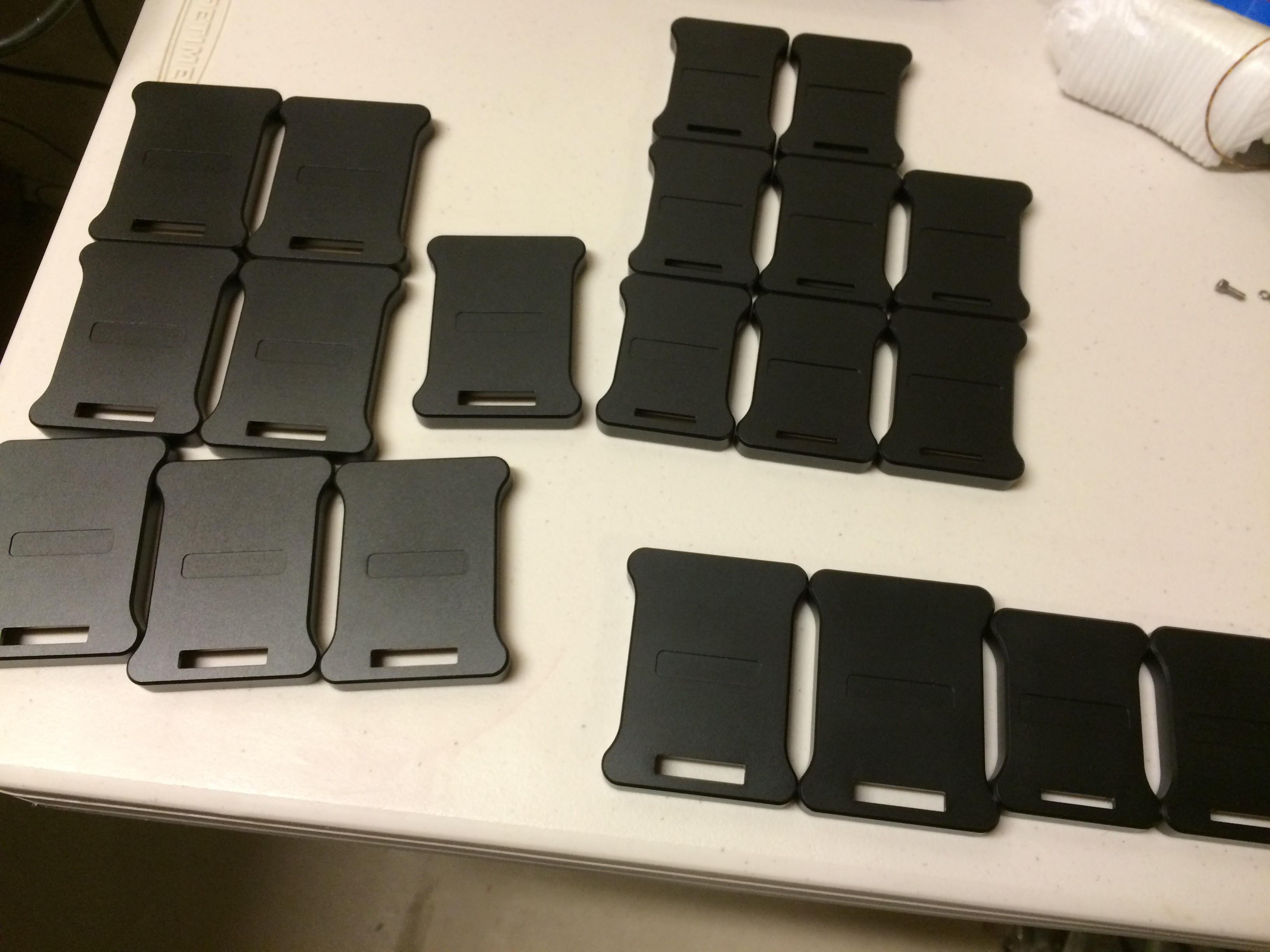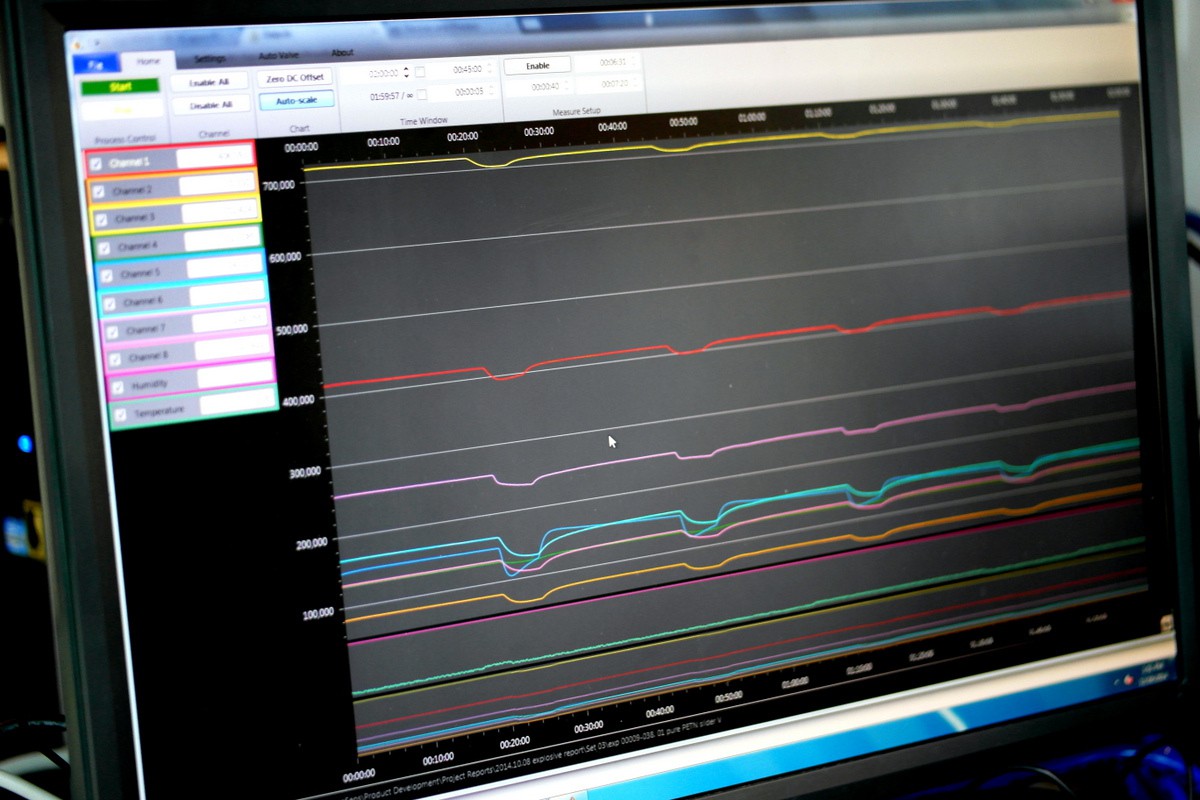Demo Videos
How the Project Solved Our Specific Problem:
The SiGZiG is a byproduct of our hardware start-up which received funding from the Defense Department to develop advanced chemical sensors. To read data from our sensors the options were limited: 1) Ginormous data loggers or 2) Non-ginormous data loggers that didn't have the stability or true resolution sufficient to monitor our sensors or 3) Build our own.
Going with option 3 (by the way we tried 1 and 2 first), we successfully built hardware that was small, low-power, super low-noise, and very temperature stable. The hardware worked great for our chemical sensors as well as everywhere else around the lab. We love it, so we decided to package it in a nice case to see who else would want one too.
The idea is to use the SiGZiG to log precise changes in temperature for months or quantify the performance of your voltage reference. Anything that outputs a voltage can now be tapped into with a simple, easy-to-use tool. Had our data logger been available at the beginning of our project, it would have literally saved us more than a year of development time.
Function:
Our vision is to make this as simple and easy to use as possible. Plug in the USB logger, use standard jumper cables to connect things up and click start on the software you downloaded from our website (or write your own).

Specs:
We are working on three initial versions with more to follow:
| 4 Channel | 4 Channel | 8 Channel |
| 18bit | 16bit | 24 bit |
| 4 Differential | 4 Differential | 8 Differential |
| -5V to 5V | -5V to 5V and -10 to 10V | -5V to 5V |
| Noise @ 1 sample/s: < LSB | Noise @ 1 sample/s: < LSB | Noise @ 1 sample/s: 0.3uV |
| Drift: 15 ppm/C | Drift: 10 ppm/C | Drift: 2ppm/C |
| Up to 200 sample/s | Up to 200k sample/s | Up to 4k sample/s |
Something that we started notice after playing with many commercially available devices is that their stated specs often didn't mean a whole lot. For example a product would state 24bit resolution but when testing it was really more like 16-18bit. All the components used matter to deliver the performance.
Our engineer Paul hooked a pulse sensor up to the 4 channel logger and here is his pulse taken from his index finger. You can see a cool plot of the test here:

When designing the usb logger, we deemed the quality of the case as highly important to help with noise reduction, durability, coolness factor, and to reflect the internal build quality.While our first prototype cases came from Protolabs (great for quick-turn prototyping), we had to search for a more cost-effective solution for mass production.Working with different manufacturers on case materials, coatings, sandblasting, metal injection molding, machining, and anything else they/we could think of, we are getting some pretty great results.
 | 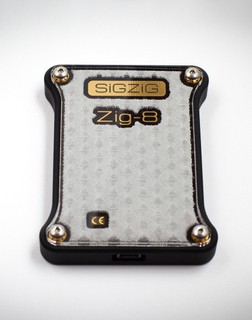 | 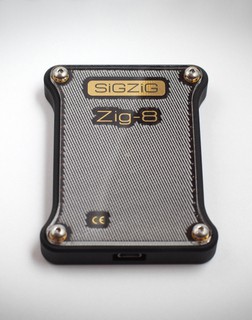 |
Modules
We haven't done any work on this yet, but we'd like to build modules to expand capability such as a
- Voltage expander-12V to 12V,
- Current to voltage10pA to 100mA, 1mA to 10A,
- Screw Terminal adapter
- Sensor Block – with luminosity, temperature, humidity, pressure, and color sensors.
- BNC
Software:
Our original software was built specifically to test and evaluate advanced chemical sensors. It works great for our R&D but is limited to Windows, has a slow refresh rate, and is best for internal use. Here is a shot of it:
With the development of the this data logger, it became apparent that we must create a software package that is silky smooth and works across all desktop operating systems.
For the past 3 months, software has been built up with a focus on functionality. Here is the prototype:

It obviously isn't pretty, so we hired a graphic designer and this is the concept we like. We are currently skinning the prototype software:
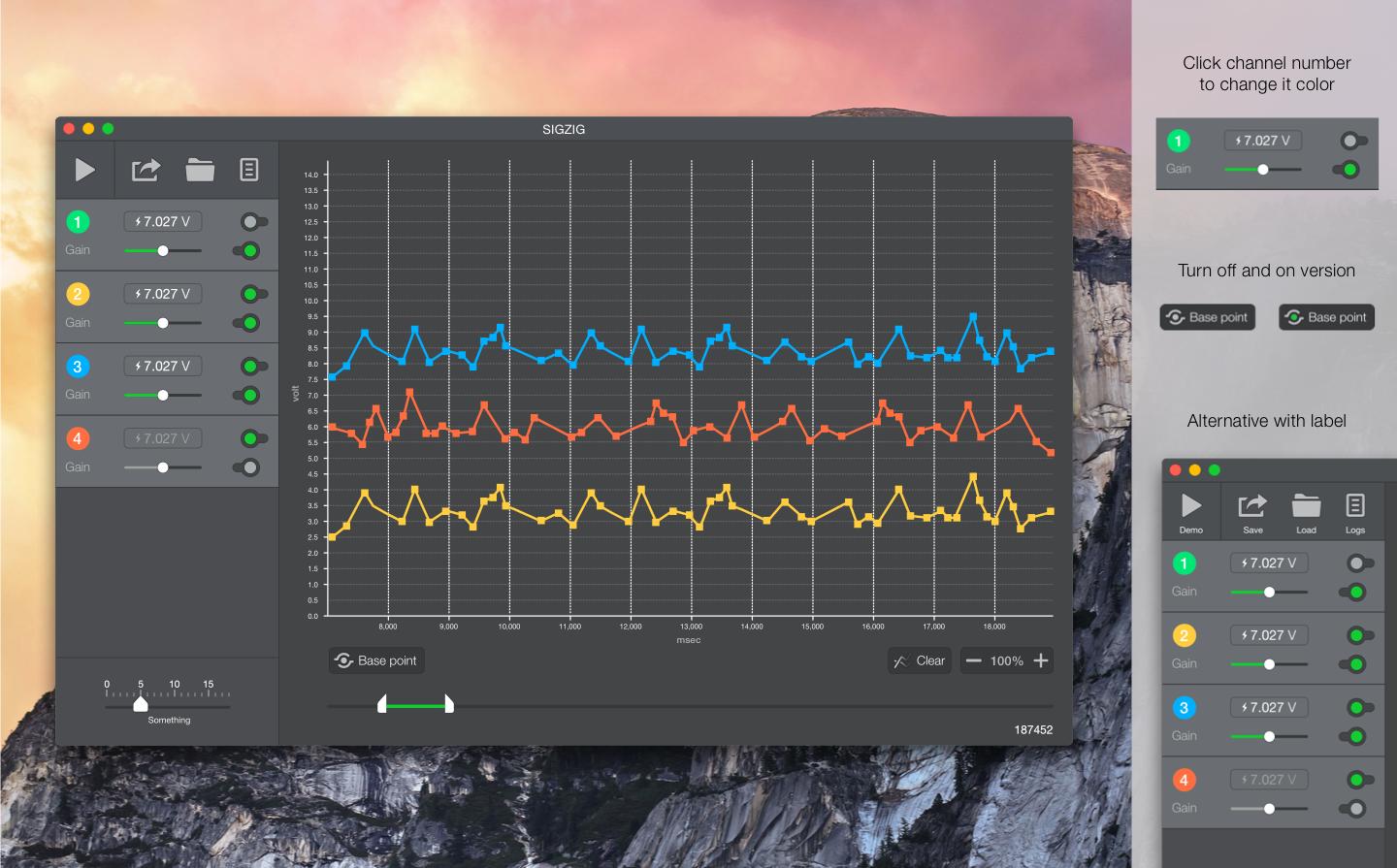
Components and Software needed to get Started:
So what do you need to start collecting data from your analog sensors?
- A SiGZiG data logger
- Micro USB cable (included with SiGZiG)
- A Computer less than 10 years old running Windows, Linux or OS X
- Our software downloaded from our website
- For the Zig-4 you can also monitor/control it directly using a simple terminal program set to a baud rate of 57600
- A program like Microsoft Excel, Matlab or even LibreOffice Calc to analyse the data
 Sigzig
Sigzig